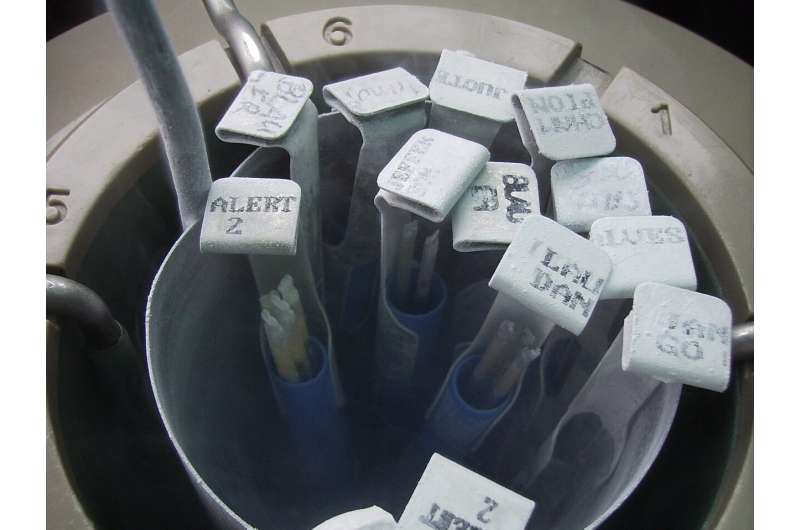Sperm migration in the genital tract: Computer simulations identify factors for success

A research team at the Humboldt University Berlin and the Leibniz Institute for Zoo and Wildlife Research (Leibniz-IZW) developed an agent-based computer model to simulate the journey of sperm cells through the female genital tract. Key factors for a successful transit could be identified without the use of animal experiments and were published in the scientific journal PLoS Computational Biology.
During mating in wildlife species, males transfer millions of sperm into the female genital tract. On the way to the egg cell the sperm have to pass through the genital tract. Very few of the sperm cells actually succeed in passing through and reaching the vicinity of the egg cell. Those that do will then be conditioned for fertilization. Mechanisms underlying sperm selection and, therefore, reproductive success are largely unknown, as their experimental study in the living organism is very difficult for both ethical and practical reasons. A deeper understanding of the factors which favor successful sperm migration and selection in the context of species-specific reproductive systems would be of great fundamental as well as of applied interest, since for threatened wildlife species this will help recognize reproductive problems and optimize assisted reproduction techniques such as artificial insemination.
The scientist team developed a spatio-temporal computer simulation model of the mammalian female genital tract, in which individual sperm cells were treated as independent agents equipped with a set of biophysical characteristics specifying concrete properties and subjected to specific rules for motion and interaction with the female genital tract. The first implementation used data on bovine genital tract geometry and the biophysical properties and principles of sperm motion of bovine sperm as observed in test tubes. Thus, sperm preferentially swam against a fluid stream (positive rheotaxis) and moved along wall structures (thigmotaxis).
In order to ensure that the model was reasonably realistic in depicting salient features of the interaction between sperm and the female genital tract, the simulation results were compared with published data derived from cattle. The simulation results demonstrated a close match with the observed timing and number of sperm actually reaching the entry of the oviducts.
"As expected, we found that physical sperm characteristics such as velocity and directional stability are essential for successful sperm. In addition, the ability to swim against the mucus flow of cervical secretions as well as the ability of sperm to align to epithelial walls of the genital tract turned out to have a tremendous impact on the chances of a successful transit of sperm to the oviduct," explains Jorin Diemer, doctoral student at the Humboldt-Universität zu Berlin.
Karin Müller, leader of the andrology lab at Leibniz-IZW, concludes, "that these identified characteristics of sperm should be considered in future attempts to condition sperm in artificial selection procedures since natural selection processes are normally bypassed in reproductive test tube technologies." This is of particular importance because a species-specific optimal time window for sperm accumulation in the oviduct exists in relation to the timing of ovulation when the oocyte is liberated for fertilization.
"The big advantage of our model is its flexibility, it can be extended and generalized to other systems," says Edda Klipp, leader of the Theoretical Biophysics department at Humboldt-Universität zu Berlin. Predictions from this computer simulation system have the potential to improve assisted reproduction in endangered species, livestock and perhaps humans without using animal experiments.
More information: Sperm migration in the genital tract - in silico experiments identify key factors for reproductive success, PLoS Computational Biology (2021). DOI: 10.1371/journal.pcbi.1009109
Journal information: PLoS Computational Biology
Provided by Leibniz Institute for Zoo and Wildlife Research


















